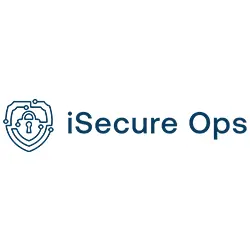Introduction
In today’s digital environment, organizations face a complex and growing attack surface that requires diligent management. While technology plays a crucial role in cybersecurity, the human factor is essential to effective Attack Surface Management (ASM). This guide explores how human behavior intersects with ASM to bolster security defenses, presenting insights and strategies for comprehensive cybersecurity.
Table of Contents
- Understanding Attack Surface Management
- The Role of Human Factors in Cybersecurity
- Common Human-Related Vulnerabilities
- Strategies for Enhancing Human-Centric Security
- Leveraging Technology to Support Human Efforts
- Measuring and Improving Human Performance in ASM
- Future Trends in Human-Centric Cybersecurity
- Conclusion
- FAQs
Understanding Attack Surface Management

Attack Surface Management (ASM) is a proactive approach to identifying, analyzing, and mitigating vulnerabilities across an organization’s digital assets. Its main objectives include asset discovery, vulnerability assessment, continuous monitoring, and digital footprint analysis, all essential to maintaining a secure cybersecurity posture.
Key ASM components:
- Cyber Asset Discovery: Identifies both internal and external assets.
- Vulnerability Assessment: Uncovers weaknesses within the system.
- Risk Prioritization: Focuses on the most pressing vulnerabilities.
- Continuous Monitoring: Ensures up-to-date awareness of the organization’s security standing.
- Digital Footprint Analysis: Provides visibility into online exposure and potential risks.
The Role of Human Factors in Cybersecurity

Human factors are pivotal in shaping an organization’s attack surface. Employees, contractors, and even clients can unintentionally create vulnerabilities or, conversely, bolster security through informed actions and behaviors. Key elements of the human factor in cybersecurity include:
- Security Awareness and Education: Employees’ understanding of security protocols can drastically reduce risks.
- Policy Compliance and Enforcement: Following security policies is vital to maintaining a stable cybersecurity posture.
- Decision-Making Under Pressure: Situational responses are crucial, especially during cybersecurity incidents.
- Susceptibility to Social Engineering: Phishing and pretexting attacks exploit human psychology to gain unauthorized access.
- Insider Threats: Both malicious and well-intentioned insiders can pose risks.
Common Human-Related Vulnerabilities
Phishing and Social Engineering
Phishing attacks manipulate human psychology to deceive individuals into revealing sensitive information. Social engineering tactics like baiting and pre-texting further exploit human vulnerabilities, making phishing one of the most prevalent threats.
Password Management
Poor password practices, such as weak passwords, reuse, and sharing, present significant risks. Strong password policies, like multi-factor authentication, mitigate these risks.
Shadow IT
Employees using unauthorized applications or cloud services can inadvertently increase the attack surface, creating “shadow IT” that complicates asset tracking and security management.
Misconfigurations
Human error during system or application configuration often leads to vulnerabilities. Examples include incorrect permissions or failing to disable unused services, both of which create openings for cyberattacks.
Insider Threats
Insider threats, whether from malicious intent or accidental actions, can expose sensitive data. Training and access management are critical to reducing insider risks.
Strategies for Enhancing Human-Centric Security

Organizations can strengthen their defenses by adopting human-focused strategies to address these vulnerabilities.
Comprehensive Security Awareness Training
Effective training programs cover:
- Phishing and Social Engineering Recognition: Training employees to recognize threats.
- Safe Browsing Habits and Password Best Practices: Promoting secure behaviors online.
- Data Handling and Protection Protocols: Ensuring information is safely managed.
Foster a Security-Conscious Culture
Creating a culture of security involves:
- Encouraging Open Communication: Promoting transparency about security issues.
- Rewarding Security-Conscious Behavior: Incentivizing safe practices.
- Leading by Example: Ensuring management demonstrates strong security values.
Implement Robust Access Controls
Enhanced access controls include:
- Multi-Factor Authentication (MFA): Reduces risks from compromised credentials.
- Role-Based Access Control (RBAC): Limits access based on job responsibilities.
- Regular Access Reviews: Ensures only necessary individuals have access to sensitive data.
Develop and Enforce Clear Security Policies
A strong security policy framework should cover:
- Technology Resource Use: Outlines acceptable and safe technology practices.
- Data Classification and Handling: Defines procedures for different data types.
- Incident Response: Provides guidelines for handling security events.
Leveraging Technology to Support Human Efforts

While human factors are essential, technology plays an equally vital role in supporting ASM efforts.
Security Automation and Orchestration
Automation reduces human error and accelerates response times by:
- Automating Repetitive Tasks: Ensures consistent compliance.
- Enhancing Response Times: Quicker, automated responses to threats.
User and Entity Behavior Analytics (UEBA)
UEBA tools detect suspicious activity by:
- Monitoring Behavior: Identifies potential insider threats.
- Providing Context for Investigations: Enables targeted, thorough responses.
Continuous Vulnerability Management
Automated tools for vulnerability management help:
- Prioritize Risks: Focus resources on the highest threats.
- Provide Real-Time Visibility: Keeps organizations aware of vulnerabilities.
Security Information and Event Management (SIEM)
SIEM platforms centralize event data to:
- Correlate Security Events: Identifies patterns in potential threats.
- Support Compliance Reporting: Facilitates audit readiness.
Measuring and Improving Human Performance in ASM

Organizations should regularly assess human factors in ASM to ensure strong cybersecurity.
Establish Key Performance Indicators (KPIs)
Key KPIs for human performance might include:
- Phishing Simulation Click Rates: Tracks employees’ susceptibility.
- Policy Compliance Rates: Measures adherence to security practices.
- Time to Report Security Incidents: Evaluates response times.
Conduct Regular Assessments
Routine assessments include:
- Social Engineering Tests: Validates employee awareness.
- Security Culture Surveys: Gauges the organization’s security mindset.
Provide Continuous Feedback and Improvement
Assessments inform training improvements:
- Customized Training Content: Focuses on specific weaknesses.
- Recognition of Strong Performance: Reinforces security-conscious behavior.
Future Trends in Human-Centric Cybersecurity
As ASM evolves, several trends are emerging in human-centric cybersecurity.
Gamification of Security Training
Interactive, gamified training has proven effective in enhancing employee engagement and retention of security practices.
AI-Powered Personalized Learning
Artificial intelligence enables customized security training tailored to individual employees’ roles and skills.
Virtual Reality (VR) and Augmented Reality (AR) Training
Immersive training solutions in VR and AR provide realistic simulations, preparing employees to respond to complex security threats.
Behavioral Analytics for Proactive Risk Mitigation
Advanced behavioral analytics predict human-driven risks, allowing for preemptive mitigation.
Conclusion
Human factors significantly impact attack surface management. By addressing human-related vulnerabilities, strengthening security awareness programs, and leveraging supportive technology, organizations can create resilient cybersecurity strategies. A balanced approach combining both technological and human elements is essential for effective attack surface management.
FAQs
What is the most significant human-related vulnerability in cybersecurity?
Social engineering, especially phishing, is one of the largest vulnerabilities, as it targets human psychology to gain unauthorized access.
How often should organizations conduct security awareness training?
Ideally, training should be held at least quarterly with frequent updates on emerging threats.
Can technology completely eliminate human-related security risks?
Technology can mitigate risks, but it cannot replace human judgment. A mix of technology and human insight provides the most comprehensive defense.
How can organizations measure the effectiveness of their security awareness programs?
Key metrics include phishing simulation results, policy compliance rates, and incident reporting times.
What role does leadership play in addressing the human factor in cybersecurity?
Leadership sets the tone for a security-conscious culture, ensuring that cybersecurity is prioritized at all organizational levels.
Reach Out Today! See How TRaViS Can Help You.













